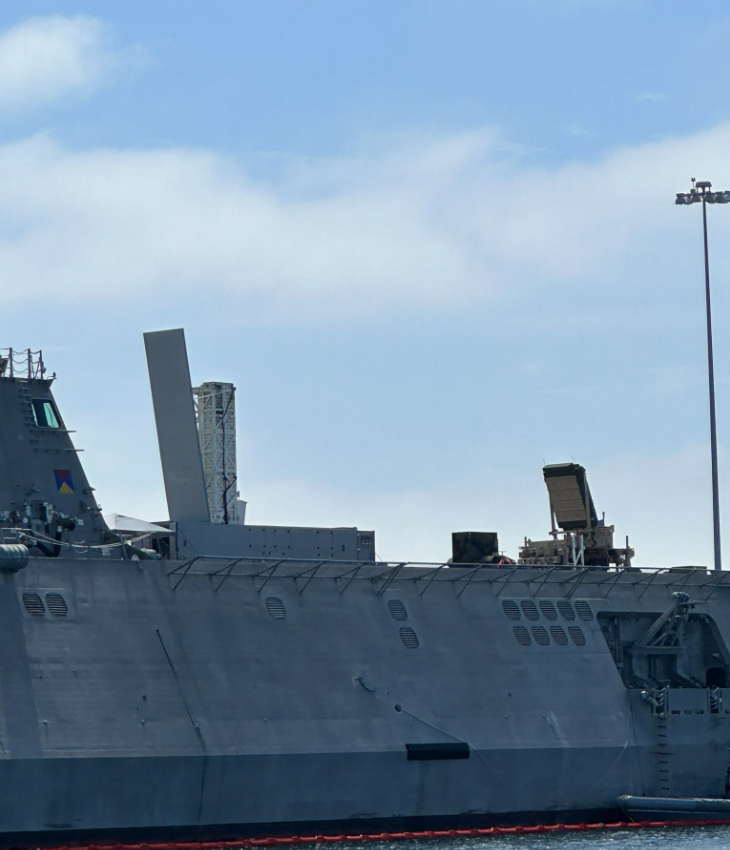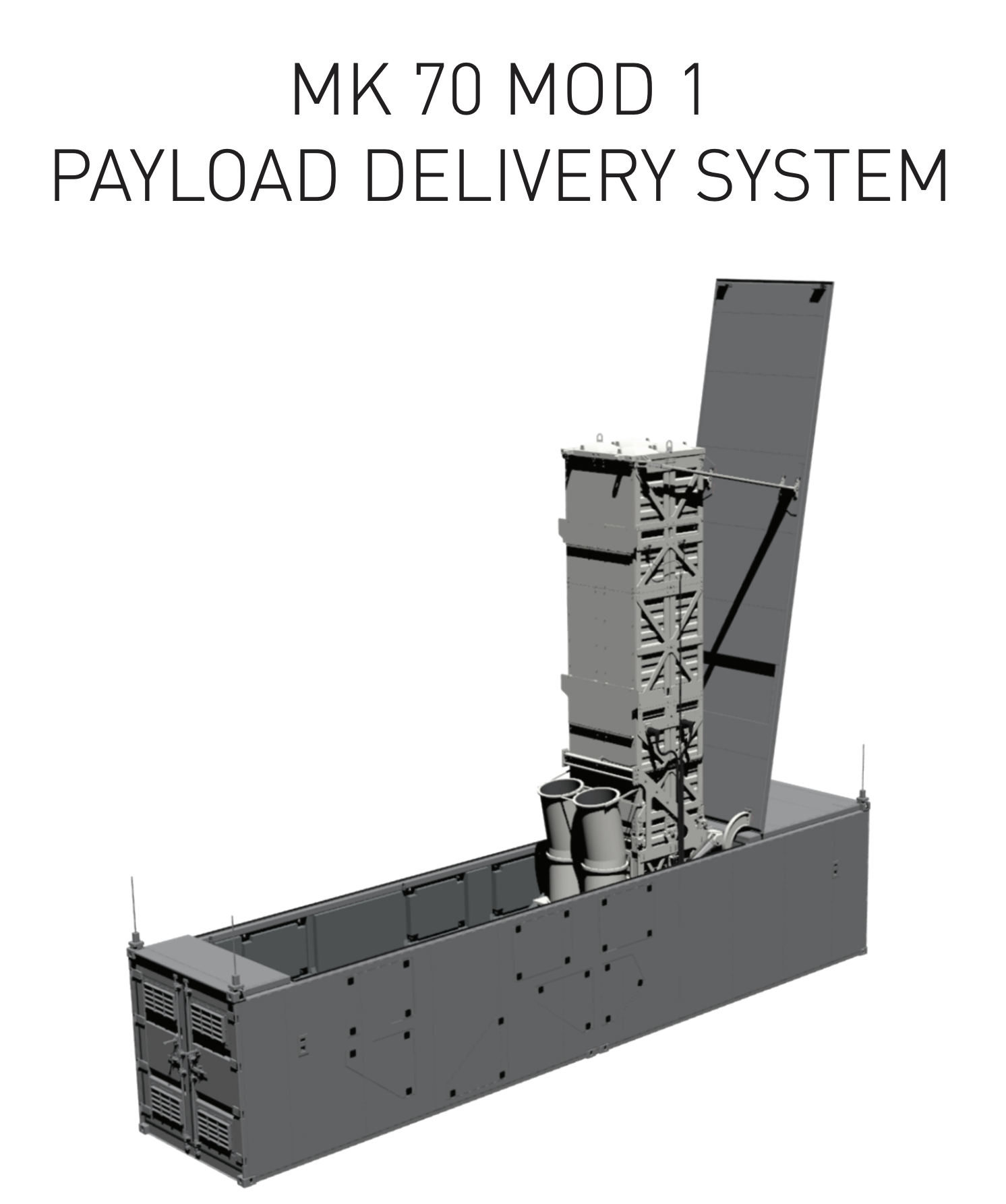
This post has been updated with additional information on the radar system seen on USS Savannah (LCS-28) .
A portable missile launcher capable of firing a combination of long-range anti-ship and anti-air weapons was spotted this week undergoing testing aboard a Littoral Combat Ship in San Diego, Calif., according to photos provided to USNI News.
Based on a series of photos reviewed by USNI News, the launcher is a Lockheed Martin MK 70 containerized vertical launching system that is capable of firing both a Raytheon Standard Missile 6 and a Tomahawk Land Attack Missile. It was spotted on the flight deck of Independence-class LCS USS Savannah (LCS-28), which was pier-side in San Diego, according to a USNI News review of the images.
When asked by USNI News, the Navy acknowledged the veracity of the photographs but did not provide additional details.
“USS Savannah (LCS-28) will participate in a live-fire demonstration during the fourth quarter of 2023 that will include a containerized launching system. More information will be provided after the evolution is complete,” Naval Surface Forces spokesperson Cmdr. Arlo Abrahamson said in a statement.
The MK 70 launcher is part of a U.S. Army program called Typhoon, part of the service’s emerging family of land-based precision weapons that vary in range from a few hundred to thousands of miles. Lockheed Martin delivered four of the prototypes to the Army in December. The technology is based on repurposing the existing MK 41 launching systems that are the standard vertical launch system for the majority of the U.S. fleet and several allies.

“That partnership enabled us to leverage technologies across our ships, launchers and combat systems programs to design, develop, integrate and quickly deliver a solution to meet the Army’s mission requirements,” Joe DePietro, Lockheed Martin general manager and vice president, said in a statement at the time.
The Army’s program follows the U.S. development of land-based Tomahawk launchers, which started in 2019 after the expiration of the Intermediate-Range Nuclear Forces treaty. The INF treaty banned ground launchers for specific types of long-range missiles.
“When signed by the United States and the Soviet Union on December 1987, the INF stipulated both nations would ban all land-based ballistic and cruise missiles with ranges between 500 and 5,500 kilometers,” reported USNI News at the time.
“The ban applied to missiles with nuclear or conventional warheads but did not apply to sea-based or air-delivered missiles, according to a June 27, 2019, Congressional Research Service report about the treaty.”
Prior to the end of the INF treaty, the U.S. placed land-based MK 41s in Romania and Poland as part of its Aegis Ashore ballistic missile defense system. The Navy says the cells contain SM-3 BMD missiles and not INF-banned land-based Tomahawks. In addition to the Standard Missile family and TLAMS, Lockheed has also tested deploying an Army Patriot anti-air PAC-3 missile from a MK 41.
The Marines have developed mobile launchers for Tomahawks and the Naval Strike Missile as part of the Force Design 2030 service reforms.
See the game-changing, cross-domain, cross-service concepts the Strategic Capabilities Office and @USNavy are rapidly developing: an SM-6 launched from a modular launcher off of USV Ranger. Such innovation drives the future of joint capabilities. #DoDInnovates pic.twitter.com/yCG57lFcNW
— Department of Defense 🇺🇸 (@DeptofDefense) September 3, 2021
The launcher on Savannah’s flight deck was seen alongside what appears to be an Army Lockheed Martin AN/TQ-53 radar. According to the Army, the Q-53 is a counterfire radar designed to help locate the origin of incoming, indirect attacks.
A previous version of this post misidentified the radar as a Marine Corps AN/TPS-80 Ground/Air Task-Oriented Radar (G/ATOR). It’s unclear if the Q-53 was wired into the MK 70, but the launcher has been tested with multiple radars, USNI News understands.
The test on Savanah has the hallmarks of other experiments developed by the Defense Department’s Strategic Capabilities Office. SCO was set up in 2016 to develop rapid capabilities.
For example, SCO fired an SM-6 from the autonomous Ghost Fleet Overlord test ship Ranger in 2021 using a similar launcher to the MK 70.
A Pentagon spokesman for SCO told USNI News the Pentagon had nothing to add beyond the statement from the Navy.
The new tests come as the Navy develops lethality and survivability enhancements to the Littoral Combat Ship fleet, based on a written summary of the effort reviewed by USNI News this week. It’s unclear if the demonstration will be part of the larger LCS upgrade effort.





